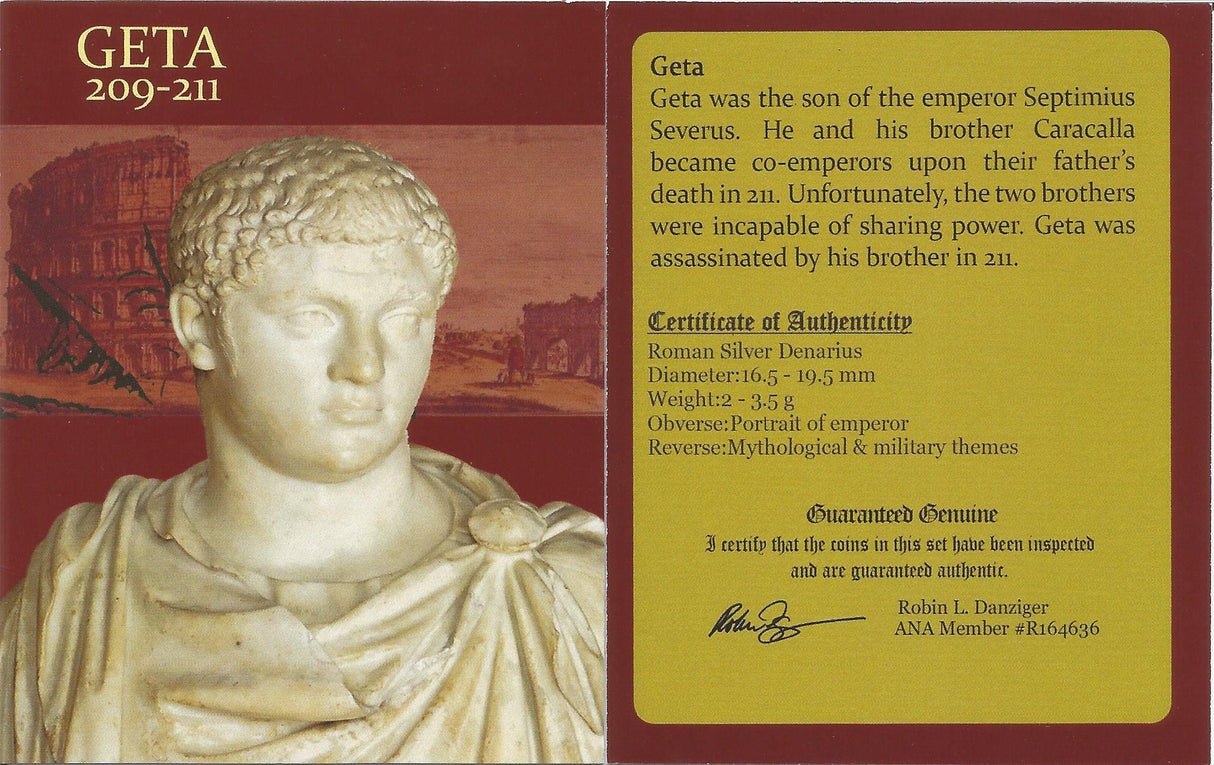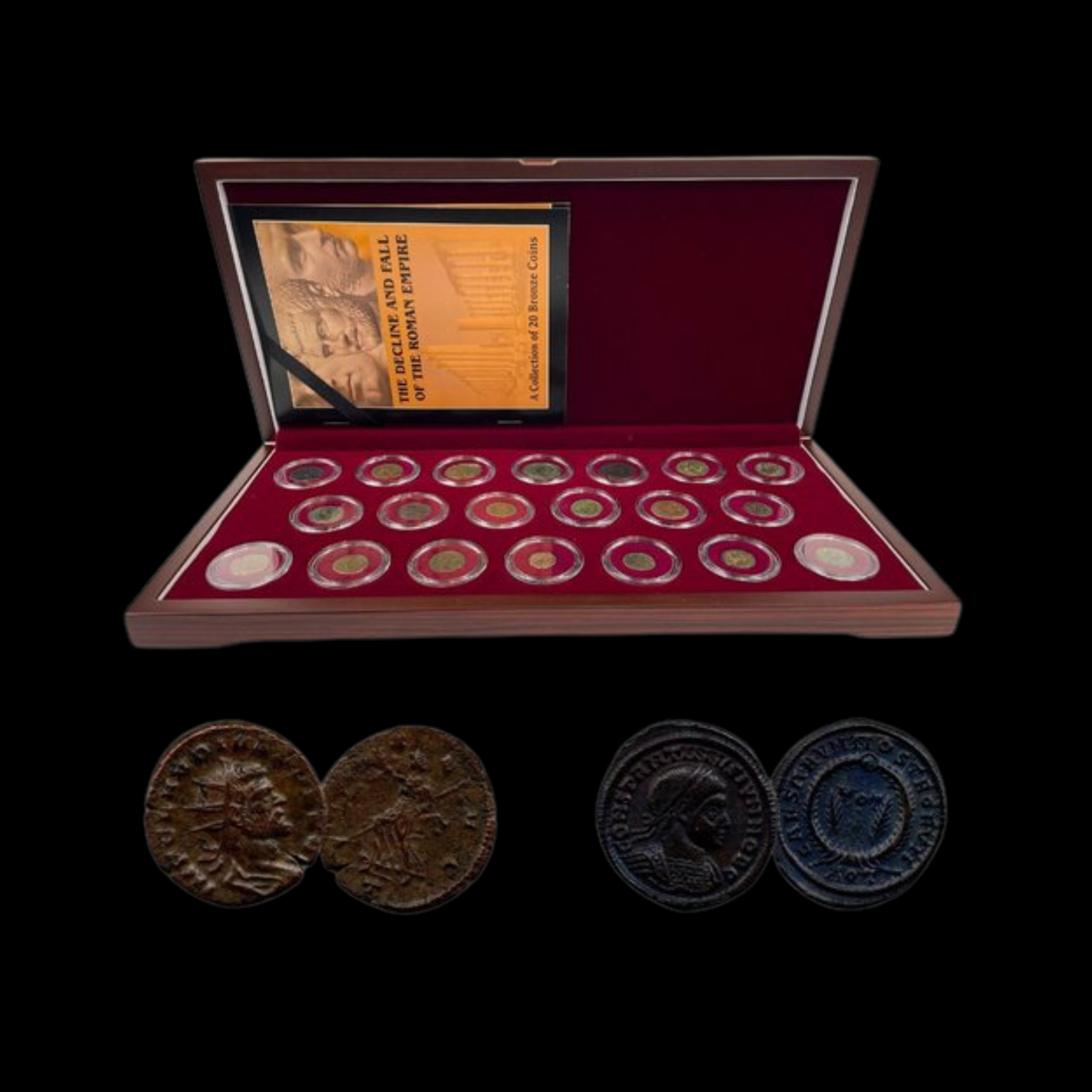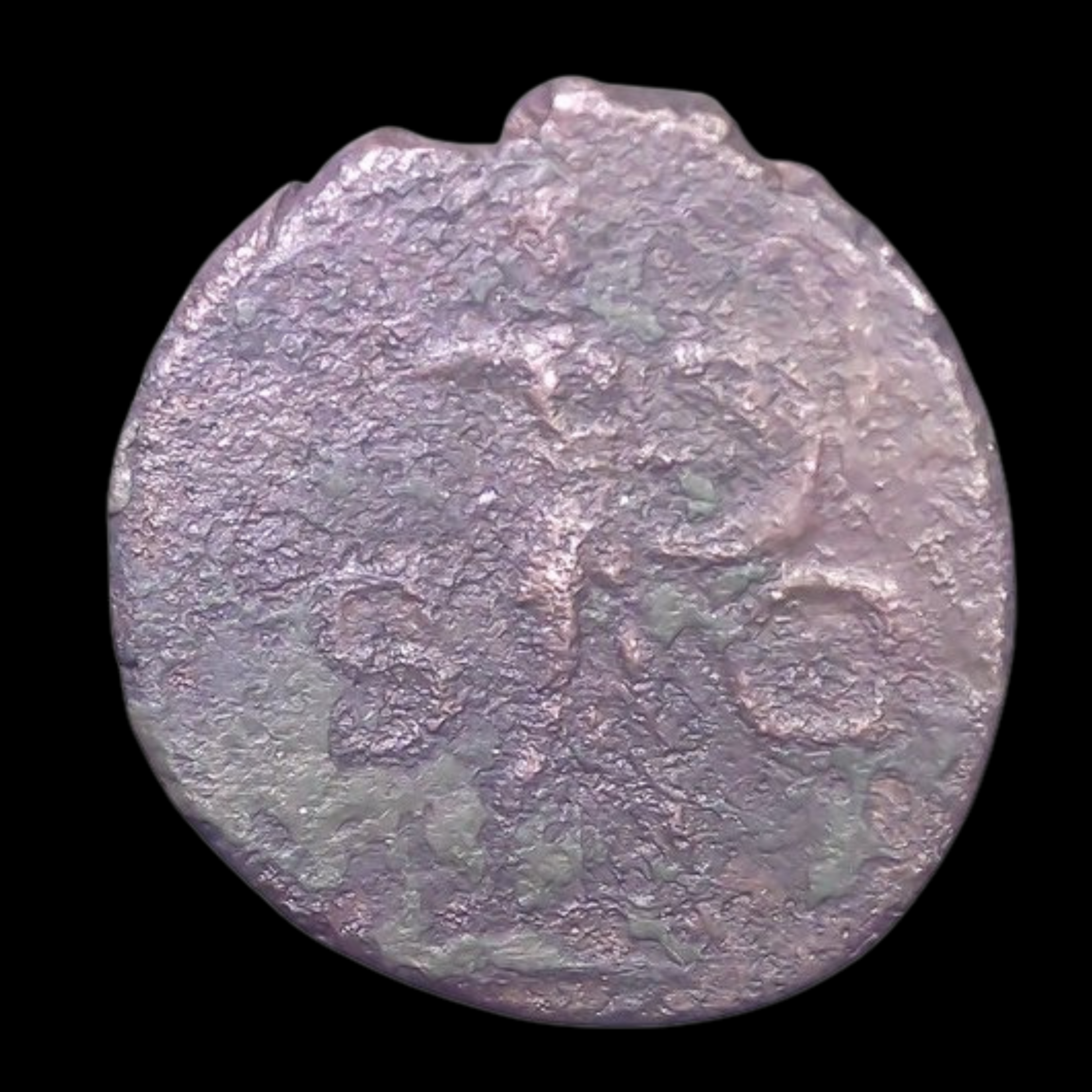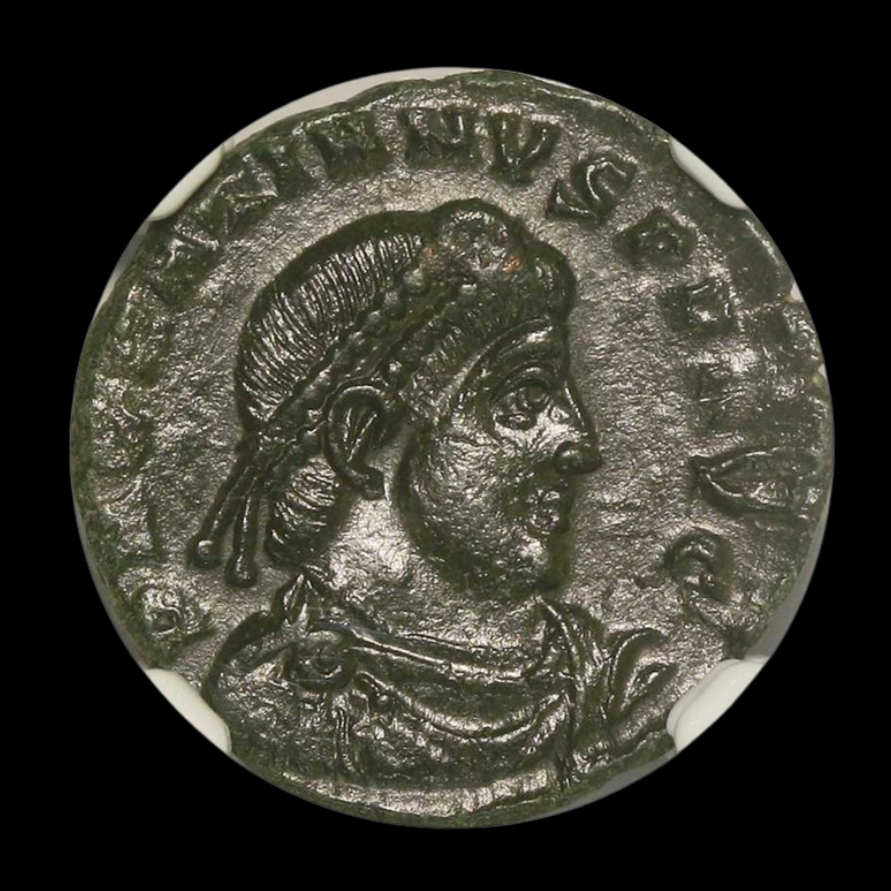 Image 1 of 6
Image 1 of 6

 Image 2 of 6
Image 2 of 6

 Image 3 of 6
Image 3 of 6

 Image 4 of 6
Image 4 of 6

 Image 5 of 6
Image 5 of 6

 Image 6 of 6
Image 6 of 6







Roman Silver Coin – Emperor Geta (about 1,800 years old) – NGC Certified – Featured in Gladiator II”
The coins shown are representative examples of the grade and type, but not the actual specimens for sale. For details on NGC’s grading standards and definitions, please refer to our NGC Grading page.
This silver-washed antoninianus depicts the ill-fated Emperor Geta, younger son of Septimius Severus and Julia Domna, whose brief reign as co-emperor with his brother Caracalla ended in his murder and subsequent systematic erasure from official records. As one of the few surviving images of Geta that escaped the thorough damnatio memoriae (condemnation of memory) ordered by his brother, this coin represents a rare tangible connection to a deliberately obscured figure in Roman imperial history.
Coin Description:
Front side: Portrait of young Emperor Geta facing right, typically wearing a radiate crown, with boyish features and Latin inscription giving his name and titles
Back side: Likely depicts Roman deities, personifications of virtues, or symbols of imperial harmony that ironically failed to materialize between the brothers
Technical Details:
Silver-washed bronze composition (antoniniani of this period contained decreasing amounts of actual silver)
Denomination: Antoninianus (double denarius)
NGC certified in protective slab
Minted between approximately 209-211 AD
Condition as certified by NGC
Historical Significance:
Geta's life and brief reign illustrate the brutal realities of Roman imperial politics. Elevated to co-Augustus by his dying father Septimius Severus in 209 AD, Geta was intended to rule jointly with his older brother Caracalla, continuing their father's dynasty. Their mutual hatred, however, led to a divided court and threats of dividing the empire itself. Only months after their father's death in 211 AD, Caracalla arranged Geta's murder, reportedly having him killed in their mother Julia Domna's arms. What followed was one of history's most thorough attempts to erase a person from memory—Geta's name was chiseled from inscriptions, his face removed from family portraits, and mentioning his name became treasonous. These coins thus represent a rare survival of his image, having escaped the systematic destruction that eliminated almost all other visual representations of this erased emperor.
The coins shown are representative examples of the grade and type, but not the actual specimens for sale. For details on NGC’s grading standards and definitions, please refer to our NGC Grading page.
This silver-washed antoninianus depicts the ill-fated Emperor Geta, younger son of Septimius Severus and Julia Domna, whose brief reign as co-emperor with his brother Caracalla ended in his murder and subsequent systematic erasure from official records. As one of the few surviving images of Geta that escaped the thorough damnatio memoriae (condemnation of memory) ordered by his brother, this coin represents a rare tangible connection to a deliberately obscured figure in Roman imperial history.
Coin Description:
Front side: Portrait of young Emperor Geta facing right, typically wearing a radiate crown, with boyish features and Latin inscription giving his name and titles
Back side: Likely depicts Roman deities, personifications of virtues, or symbols of imperial harmony that ironically failed to materialize between the brothers
Technical Details:
Silver-washed bronze composition (antoniniani of this period contained decreasing amounts of actual silver)
Denomination: Antoninianus (double denarius)
NGC certified in protective slab
Minted between approximately 209-211 AD
Condition as certified by NGC
Historical Significance:
Geta's life and brief reign illustrate the brutal realities of Roman imperial politics. Elevated to co-Augustus by his dying father Septimius Severus in 209 AD, Geta was intended to rule jointly with his older brother Caracalla, continuing their father's dynasty. Their mutual hatred, however, led to a divided court and threats of dividing the empire itself. Only months after their father's death in 211 AD, Caracalla arranged Geta's murder, reportedly having him killed in their mother Julia Domna's arms. What followed was one of history's most thorough attempts to erase a person from memory—Geta's name was chiseled from inscriptions, his face removed from family portraits, and mentioning his name became treasonous. These coins thus represent a rare survival of his image, having escaped the systematic destruction that eliminated almost all other visual representations of this erased emperor.























